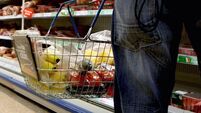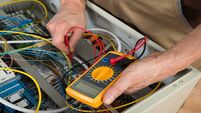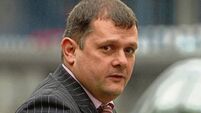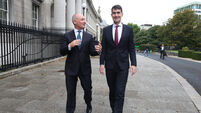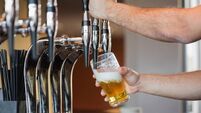Accused sighted in area on day of murder, court hears
A man accused of murder was seen driving into Drogheda town with a girl in the passenger seat of his car on the day a German woman disappeared, a witness told a jury at the Central Criminal Court today.
Mr John Clarke, a local painting contractor, was stopped at a junction when he recalled seeing the accused drive past him towards Drogheda.
"The driver of that car was Michael Murphy. There was a girl sitting in the passenger seat," Mr Clarke told the court.
"I knew his Dad, I’ve known him a long time from seeing him about the town," he said.
Mr Clarke said the woman in the passenger seat was "just a girl with fair hair, shoulder length" he added, telling the jury he saw them at about "three minutes to two exactly" in the afternoon.
He described the car as being "very dark in colour".
Mr Clarke was giving evidence on the fifth day of the murder trial of Mr Michael Murphy (aged 42) of Rathmullen Park, Drogheda, Co Louth. Mr Murphy denies murdering German journalist Ms Bettina Poeschel (aged 28) on a date between 25 September and 17 October 2001 at Donore, Co Meath.
Earlier, forensic scientist Ms Martina McBride told the court that her findings on vaginal swabs taken from Ms Poeschel’s body confirmed the presence of semen.
She also found evidence of semenal staining on the black panties found on Ms Poeschel but said that because of a strong "Jeyes Fluid, disinfectant or creosol type smell" on them, they had to be sent off for further testing.
Mc Bride also told the jury that the blue gortex jacket worn by Bettina also "smelt of the same disinfectant smell".
The victim’s red leather shoes, found in a skip near some roadwork portacabins in Donore, were also forensically tested and found to have a piece of leather missing from the inside.
A matching piece of red leather was later found in the grass at the murder scene. Ms McBride said this indicated "the shoes were left at the scene long enough for an animal to begin eating them and were then taken to the skip hours or days later".
She also revealed that a button and metal waistband clasp found on Bettina’s body matched a pair of black trousers also found hidden in a skip: "The clasp found on the body fitted neatly into the missing clasp gap on the waistband of the trousers," she said.
Mr Pat McCahey testified that he had been working with the accused on the construction of the motorway at Donore on the day of Ms Poeschels’ disappearance.
He told the court Mr Murphy "kept shooting off to see another man" about a pump.
"He could be away twenty minutes, half an hour or longer. He was away four or five times" he added.
"There was a particular time we were talking about dogs," Mr McCahey continued.
"Michael Murphy said to me he’d have to take some disinfectant, that that was going to be good stuff for cleaning out the kennels. He wanted it for the dogs. It was a container of some liquid that was a cleaning fluid in the toilets," he said.
Garda Charles O’Hanlon from Drogheda Garda station gave evidence that he was conducting house to house enquiries in the area three days after Ms Poeschel’s badly decomposed body was found in a dense thicket at Donore.
He said he interviewed the accused at a house in Rathmullen Park on 20 October 2001 as part of his enquiries and found him to be "calm when talking to gardaí".
"His partner was in and out of the room and they couldn’t decide if he had returned home for lunch that day," said Gda O’Hanlon.
When asked if he had seen anything unusual on the 25 September the accused allegedly replied "nothing unusual".
"He said he pulled a muscle in his left side at work that Tuesday and was off work for four days," added Gda O’Hanlon.
Later, a foreman working on the same motorway testified that on 26 September Mr Murphy told him he hurt his back: "He said he hurt his back and he asked could he go to the doctor," said Mr Alan Lynch.
"I asked him if he hurt his back working on the pumps but he said no, he hurt it at home," he added.
The trial continues next week before Mr Justice Aindrias O’Caoimh and a jury of seven men and five women.








